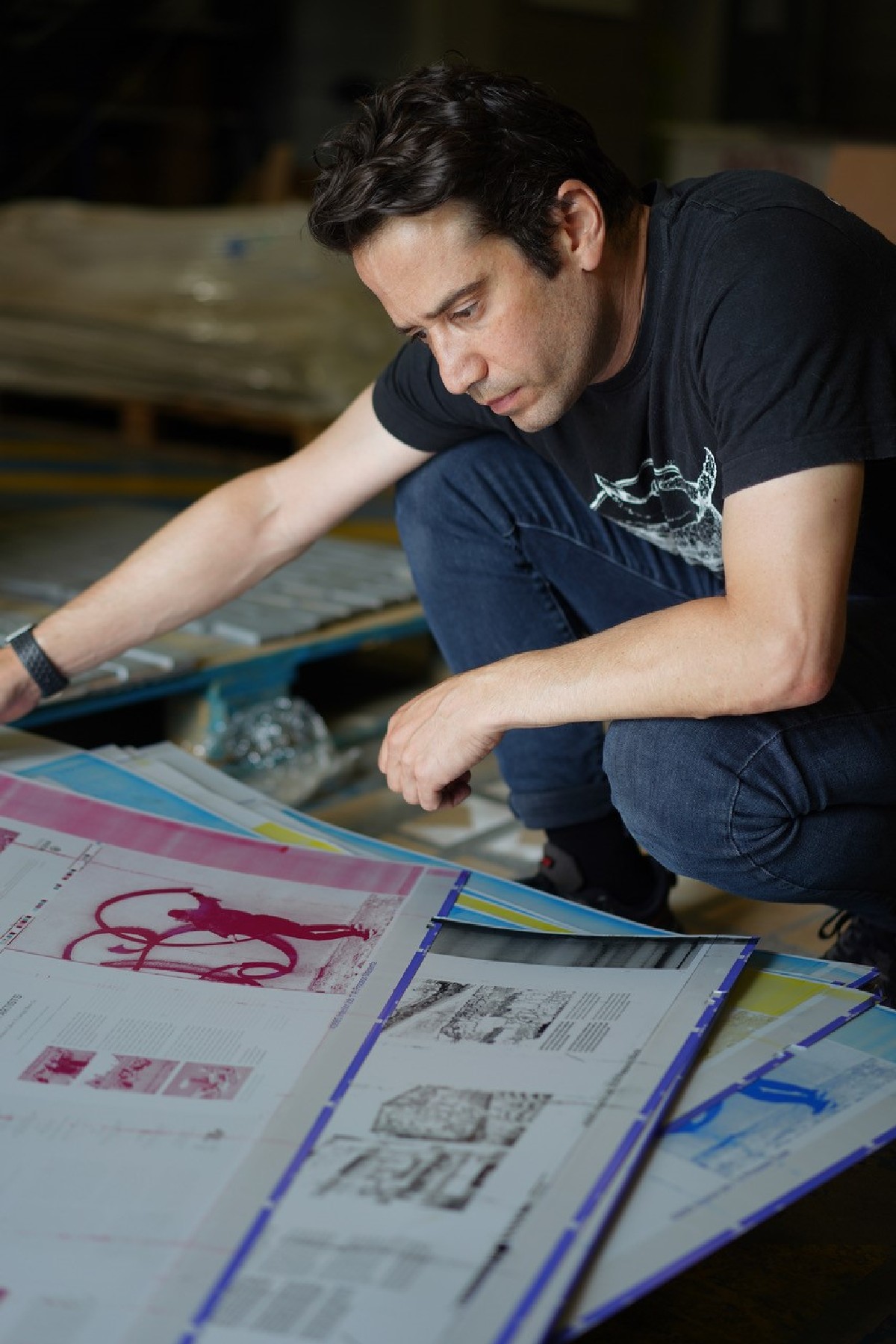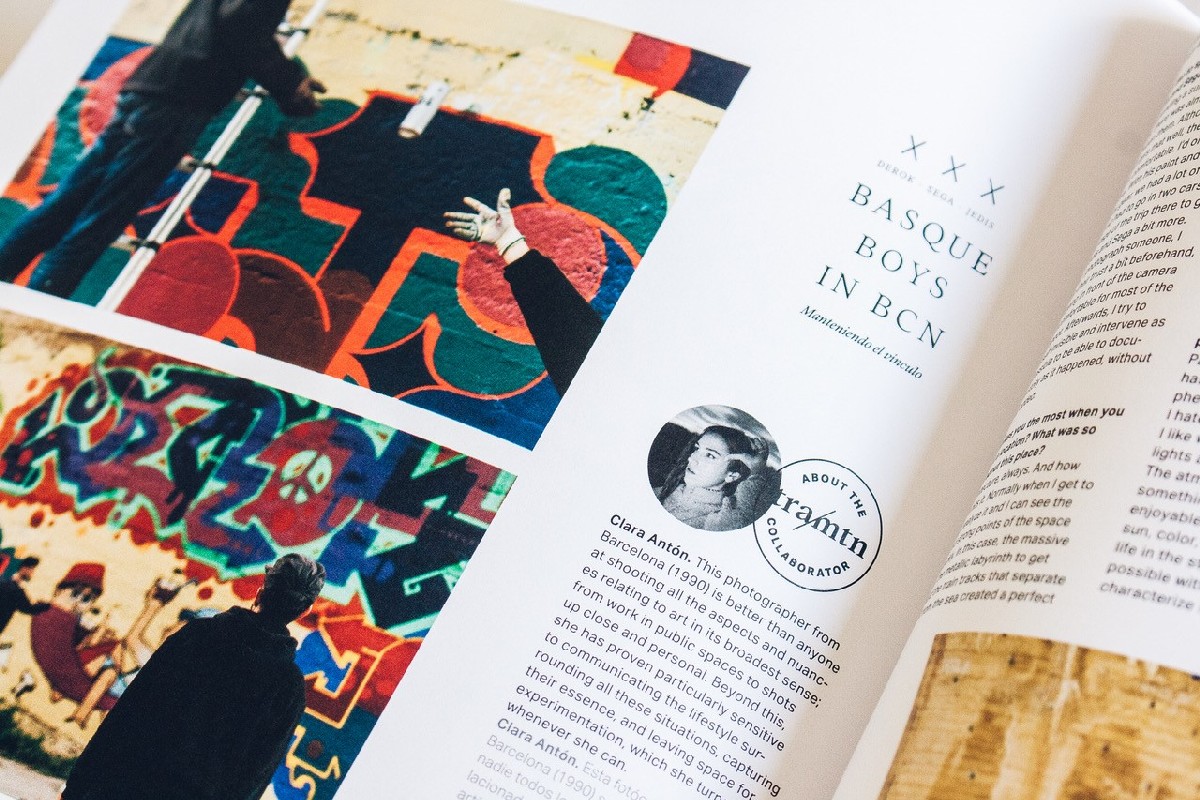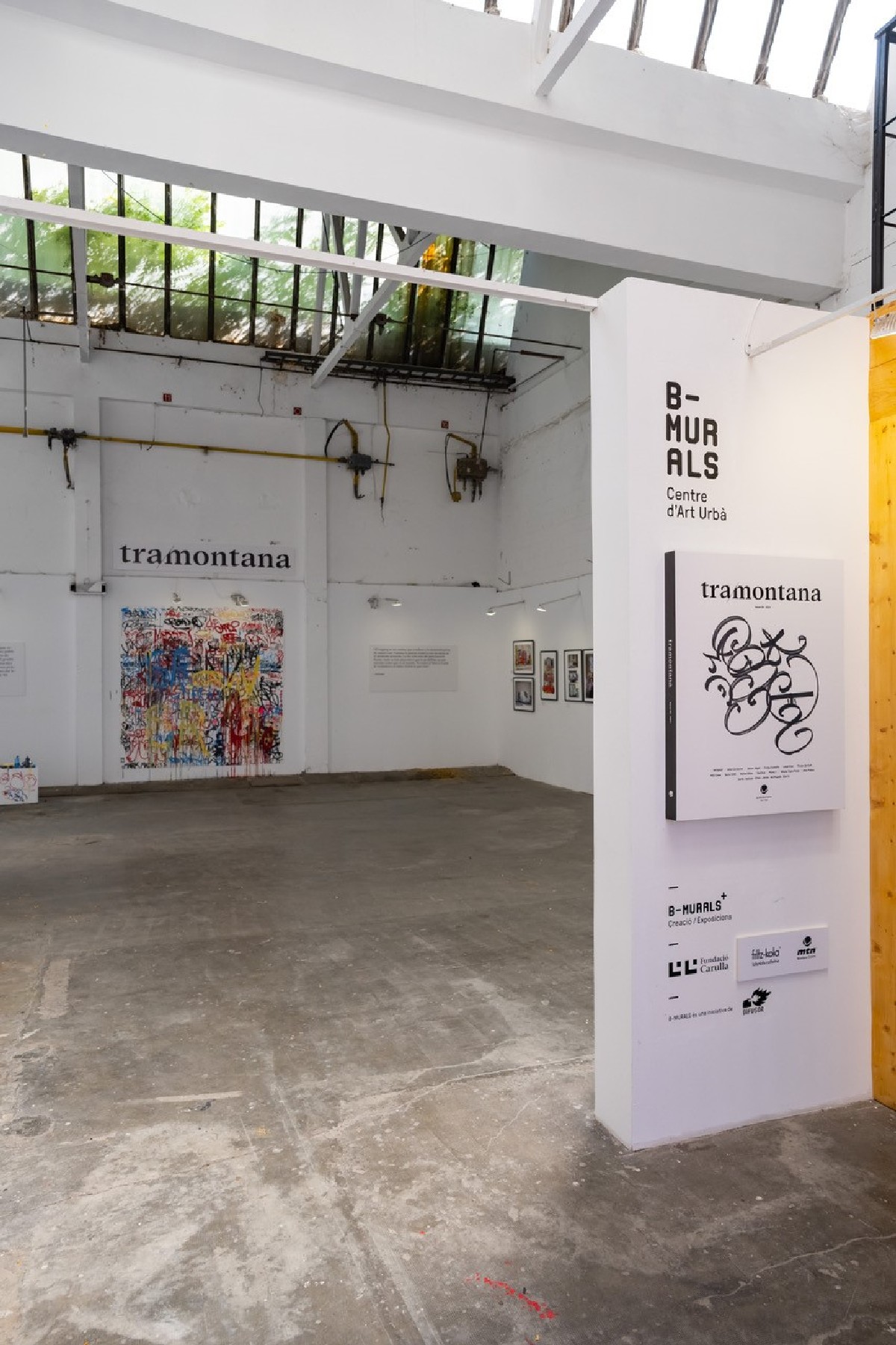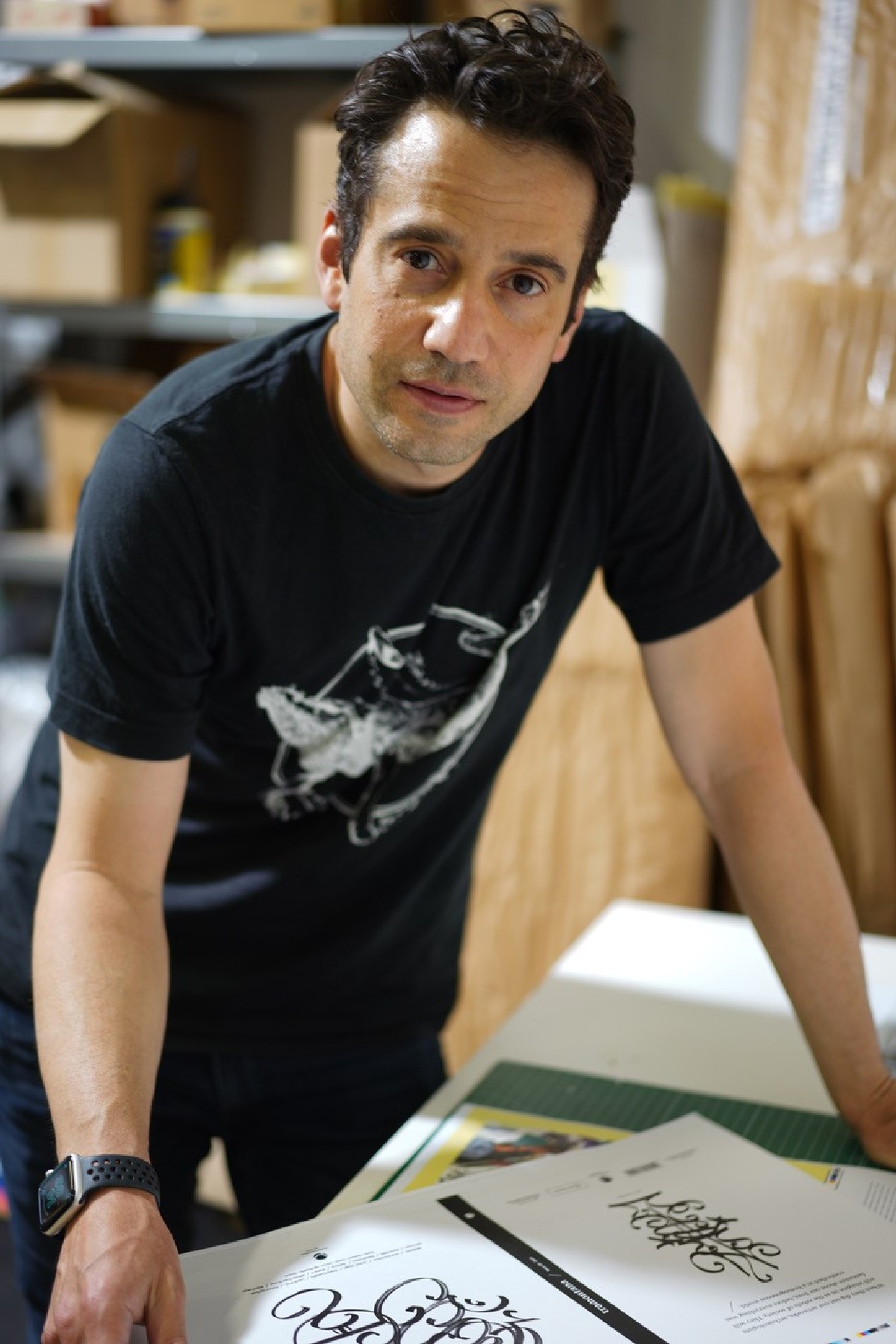- About MTN
Would you like to stay up to date on the latest MTN world news? Products, graffiti, murals, festivals, art and much more.
Return "A Premium Present for All Our Customers" - An Interview with Antonio G. Mora, Editorial Director of Tramontana
Now that number 5 of Tramontana has been launched, what better time to interview the director of the magazine? His name is Antonio G. Mora, a man with extensive experience in the publishing world, as well as the marketing department in Montana Colors, and is in charge of creating, managing and coordinating the considerable contents of our free publication that is distributed all over the world.
For anyone unfamiliar with the magazine, what is Tramontana?
Tramontana is an editorial project by Montana Colors whose main objective is the international cultural diffusion of contemporary artistic trends and concerns related to the field of the Catalan brand, published in English and Spanish.
Can you sum up your relationship with Montana Colors before Tramontana?
I first heard about Montana Colors when it was founded in the mid-90’s, and started to use their products shortly after. However, I became much closer to the brand during my time at Serie B Magazine – a pioneering editorial project where I worked as a co-editor and editorial director focussing on content related to the independent artistic and cultural scene.
After I left Serie B in 2009, I became part of the Montana Colors family, in charge of online and offline communication and marketing until 2017. During that period, we created the MTN-World blog and positioned the brand on social networks and broadcast channels to publish our audiovisual production, thanks to all the content from the multiple collaborations that were developed at that time with various cultural entities, promoters and, above all, independent artists: from recognized international names to local talent, following the philosophy of the brand.

How did you come up with the Tramontana project?
Tramontana was an idea of Jordi Rubio, CEO of Montana Colors, that he’d wanted to realize for a long time. In fact, I remember that at the first lunch we had together when I signed for the company, he said to me: "We start here. But in the future I’d like you to put together a publication for Montana Colors." A few years later, we went to press.
Who’s in the Tramontana team?
The core team consists of an art director, Ángel Sanz, and myself, the editorial director. But we have a wide variety of satellite contributors, from workers from different departments of Montana Colors to freelance professionals whose joint efforts are able to meet the needs of such a demanding project, both in terms of substance, form and scope.
The design and print quality of the magazine makes it stand out against other similar publications. Where did you get your inspiration from?
From minute one it was clear that it should be a free, high-quality project to communicate culture. A premium present for all our customers, followers and lovers of new artistic and cultural movements, not necessarily related to Montana Colors. An item for collective entertainment which would add value to this growing art scene and, at the same time, offer recognition of its past, present and future. Such unique and ambitious content can only be appreciated in a volume of the highest quality.

What’s the reach of the magazine today?
Currently, 20,000 copies are distributed over five continents, especially concentrated in Europe and America thanks to the extensive commercial network of Montana Colors. In parallel, we are working on adding other types of distribution points to this network like cultural spaces, art galleries and bookstores, in addition to our forthcoming website.
As a physical magazine, how important are social networks to share content?
For a publication that has comes out every six to eight months, social networks provide a daily connection with readers, where we can share some of the content from the print copies, related to current events or to promote the work of artists who’ve previously appeared in Tramontana.
We publish dozens of collaborations in each issue that result in a lot of material, both visual and written, that we’re able to share online. Soon, we’ll have a web page that will be a further point of contact, also featuring an online store and news that will expand on the printed project.
In your opinion, what were the most significant interviews or articles that appeared in the first four issues?
It's hard to choose. What I can tell you is that I feel very proud to have been able to include names from the artistic scene that I admire a lot, from representatives of traditional graffiti to people who have made their visual language evolve in other directions. I consider all of them of great value and think that they contribute a necessary and regenerative diversity to contemporary art.

Customers might expect to have to pay for a publication like Tramontana. How does it make sense to give it away for free?
As I said before, we want to offer Tramontana as a gift, a free contribution to the scene, which documents current events and preserves history. What’s more, the fact that it’s free gives you unequaled diffusion, exponentially multiplying the reach. The truth is that it’s exciting to know that each number of Tramontana is out of stock, which suggests that the 20 thousand magazines are part of our readers' libraries and may be something they share with their closest circle of friends.
This latest issue features a lot of street graffiti content, going back to the beginnings of the culture. Does it respond to a renewed interest in graffiti fundamentals, or is it something more personal?
I had wanted to emphasize what I consider to be the essence of contemporary graffiti for a long time. We delve into the most technical and fundamental aspects, represented in the simplicity of the act of putting your tag on a wall, and its evolution towards a more effective and visible format such as the throw-up. We explore a more sociological, interpersonal perspective, through of the form of pre-internet communication: the exchange of letters and postcards. We also identify urban spaces that were a key meeting point in cities around the world.
How do you think the project can evolve from now on?
I see Tramontana evolve as a platform that goes beyond its main printed project, to be a generator of unique content, a curator and promoter of the multiple international talents that we are lucky enough to have in our scene that it’s our duty to preserve and care for.
Tramontana is available worldwide through all good Montana Colors dealers. Read a report of the ambitious launch party held in Barcelona here.
Issue one and two are available for download as a PDF, click here to find out how.
 ShareJuly 16, 2021
ShareJuly 16, 2021
